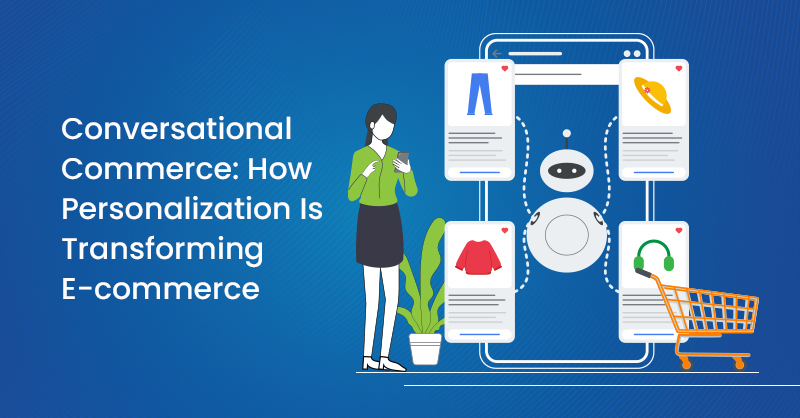Technology is advancing at astounding rates. Sure, in the most popular sci-fi movies, we had flying cars and holograms by now, but that doesn’t make the tech we do have any less efficient and useful.
We do have stuff like self-driving vehicles, big data and predictive analytics, drone and automation hardware, smart homes and offices, and much more. Then, on the device side, there are wearables, smartphones and tablets, mini and desktop computers, laptops, etc. Throw in the internet and wireless connectivity, modern entertainment through streaming services, and the like, and you have a well-rounded portfolio.
Just look around you. We live and breathe technology on a daily basis, and chances are, if it suddenly disappeared, you -- and the rest of us -- would be lost. Despite this, it seems many brands and companies are reluctant to adopt modern technology, at least more openly.
In a study by the MIT Sloan Management Review, 78% of survey respondents claim a digital transformation is critical to their business organization within the next two years. Unfortunately, 63% also say their organization adopts technology too slowly to keep up.
How and where do you start, though? What are some ways a business -- big or small -- could incorporate technology? Here are some of them.
1. Look for Ways to Improve Internal Processes
Step one is always -- and always will be -- assessing your internal processes and systems and finding ways to improve them. As opposed to just optimizing the hardware and software you have currently, it’s about finding ways to replace and modernize it.
For example, a business that, for decades, has had a human labor force responsible for packaging and bundling goods may learn it’s cheaper and more efficient to automate the process with modern technology and machines. You do lose that human element, and there are associated problems, like putting loyal employees out of a job. That doesn’t change the fact that modern technology can and does help us be more efficient, though.
2. Find Insights on Social Media
The biggest companies in the market have the funds and resources to run a marketing team that is capable of returning actionable insights to the decision makers. Essentially, this allows them to make more informed decisions about new products and services, promotions, customer targeting and more. It also provides deep knowledge of a customer base or demographic, which can be leveraged.
But not all brands or companies have the bandwidth to do such a thing. Furthermore, some organizations just don’t want to focus all their efforts on marketing, which is understandable. That’s where social media comes into play. Not only does it provide an online, real-time presence for your organization and team, but it also can deliver insights you need to make pivotal changes.
Many brands promote their businesses at trade shows, giving themselves exposure to new audiences. Through the hustle of the crowds, some companies have turned to using hashtags on their booth. This can definitely give a company a boost on the internet marketing side. Posting throughout the day on your social media channels and incorporating the relevant hashtags will entice new audiences to learn more about your business.
3. Utilize the Robust Analytics Platforms
Google Analytics is, by and far, one of the most popular players in the space. If you haven’t heard of the platform, then you’ve been living under a rock -- or more like living hundreds of miles under the ocean, nestled underneath the sand, directly beneath a rock.
You’d be forgiven for thinking this is a marketing and performance tool for web admins only. However, you can also use analytics platforms to understand reader and audience engagement, customer loyalty, receive feedback and more. Neil Patel -- whom you might have heard of -- discusses the use of Google Analytics outside of web and traffic metrics.
4. Bring Back Real-Time Communications and Customer Support
In the past, real-time communication was a huge part of the modern customer service approach. However, it was largely facilitated via phone and in-person interactions. That’s no longer the case. People tend to reach out via email, social media and even through official channels such as brand websites. That doesn’t mean you have to forget about real-time communications.
In fact, chatbots and modern messaging platforms allow your teams to communicate directly with customers, in real-time, on a more personal level. The same is true of social media and public forum interactions. Lots of businesses are using Twitter as a customer service platform, for example, to reach out to customers having a poor or less than nominal experience.
Chatbots are being deployed to keep these services alive and active, 24/7, which is increasingly important for an international business with customers spread across the world. A company based out of New York, for instance, won’t conventionally be available to someone living in the UK, outside of local time.
5. Take Advantage of Offsite Storage and Systems
You don’t actually have to set up an internal server-system to deliver a modern customer experience these days. There are many cloud and remote service providers that can be used to offset the requirements and costs of running your own data systems.
In fact, this can end up being safer in many cases. A third-party has more time and resources to invest in total security and system maintenance. Plus, in the event of a serious emergency or catastrophic failure, your content remains safe and secure. If your business burns down, for example, you still have all your customer data, insights, transaction info and more because it’s stored elsewhere.
There are many ways to deploy cloud computing and remote storage services for your business. It’s time to look into it.
6. Stay Connected With Mobile Devices
Have you ever watched a mail or package courier after they drop something off at your door? They usually scan a barcode on the package using a small handheld device or tablet. This updates the parcel tracking information, all processed online. It also updates their internal reporting systems to let those in charge know the package was delivered successfully, and much more. You can, for instance, see how long it took a particular package to ship from point A to point B.
Retail fulfillment centers -- Amazon is a great example -- do something similar with packages and items they prepare for shipment out to customers. It just goes to show that mobile devices can be used to do a whole lot in the business world.
Imagine doling out mobile devices to a team of remote professionals that you can use to communicate with one another in real-time. It would be a great way to improve the communication and efficiency of a remote operational team. Wouldn’t it?
This is another great example of how modern technology is being used to improve business processes and how you also could deploy it for your team.
7. Boost Engagement and Feedback
Ever heard of a service called MailChimp? It allows you to create and send out automated email campaigns to a list of contacts, like registered customers. In this way, you can deliver a regular email newsletter to audiences about upcoming promotions, deals, product releases and more. It also tracks performance and progress of all campaigns in real-time.
This is a direct representation of how modern technology and platforms can be used to boost customer engagement and feedback. Many of these services allow subscribers to reach out or weigh-in with their own opinions. You can set up polls, surveys and questionnaires across your channels to gather more insights as well.
This ensures you’re not flying blind, but instead navigating with an accurate, clear picture of your audience and their needs. It really is amazing what modern technology can do and what kind of information it can drop in your lap.






on
Utilising advanced technology will increase the speed of your business growth. There is software available for all kind of management work which help you reduce the cost of management. Let’s take the example of the social media tool. There are several social media management tools which allow you to automate the social posting through their advance dashboard. You do not need to be online always to have a conversation with your audience. Now AI chatbot is the leading technology in the market which can automate your online support system.
Using technology will save your precious time that you can use somewhere else.
Thank you
on
hi, very good Article.
Thank you for sharing it with us